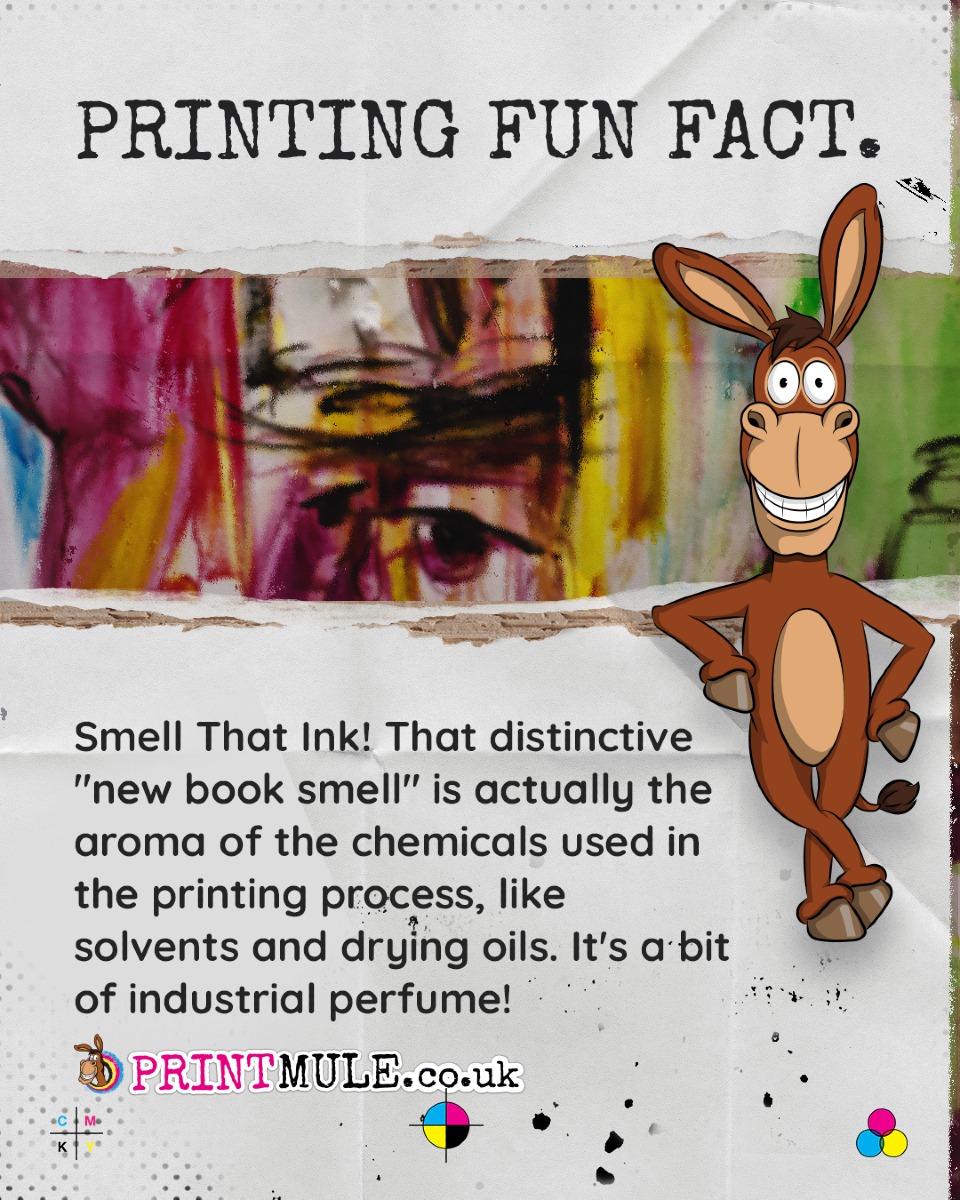Ah, the “new book smell.” That unmistakable aroma that greets you when you crack open a fresh novel, a crisp textbook, or even a freshly printed brochure. It’s a scent that evokes feelings of possibility, knowledge, and maybe just a little bit of bibliophile bliss. But what if we told you…it’s not actually the pages themselves you’re inhaling?
Yep, as our little mule buddy there points out, that distinctive “new book smell” is actually a cocktail of volatile organic compounds (VOCs). In simpler terms, it’s the smell of the stuff used in the printing process.
A Whiff of Industrial Perfume
The main culprits behind that beloved scent are things like:
- Solvents: These are used to dissolve the inks and keep them flowing smoothly through the printing press.
- Drying Oils: These oils are often present in inks and help them to dry and adhere to the paper.
- Other chemicals: Various adhesives and paper treatments can also contribute to the unique odor.
So, instead of a pure, papery essence, you’re getting a bit of an “industrial perfume,” a blend of chemicals that, surprisingly, many of us find quite pleasing.
Does It Change How You Feel?
This is the real question, isn’t it? Does knowing the scientific breakdown of that scent diminish your enjoyment of it?
For some, it might. The romantic notion of the paper’s history and the author’s words might be slightly tarnished by the reality of chemical components.
But for others, it might not matter in the slightest. The association of that smell with the joy of reading and the excitement of new information is strong enough to override any chemical misgivings.
Perhaps it’s similar to how we enjoy the smell of gasoline (another chemical concoction) because we associate it with the freedom of driving. Our brains are powerful at forging connections between scents and emotions.
Print Mule’s Take:
We at Print Mule are fascinated by the science behind printing, even the olfactory side of it! While we appreciate the allure of the “new book smell,” we also prioritize using quality materials and processes to ensure the best possible results for your print projects. (And we try to keep the fumes at a reasonable level, of course!)
What Do You Think?
We’re genuinely curious to hear your thoughts!
- Are you a die-hard fan of the “new book smell”?
- Does knowing its chemical origins change your perspective?
- Are there other printing-related smells you find intriguing (or offensive!)?






